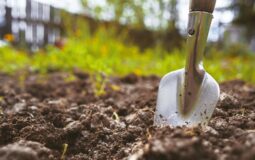The foundation of a thriving garden lies beneath the surface – in the soil. Understanding the diverse needs of plants and selecting the right soil is a fundamental aspect of successful gardening. Different plants have specific preferences when it comes to soil type, texture, and nutrient content. In this comprehensive guide, we will explore the key factors to consider when choosing the right soil for various types of plants in your garden, ensuring optimal growing conditions and a lush, vibrant landscape.
Factors to Consider:
1. Soil Type:
- Clay Soil:
- Retains moisture well but can become compacted.
- Suitable for plants that thrive in moist conditions, such as certain perennials and shrubs.
- Sandy Soil:
- Drains quickly but lacks nutrient retention.
- Ideal for drought-tolerant plants like succulents and lavender.
- Loamy Soil:
- A balanced mix of clay, sand, and silt.
- Versatile and suitable for a wide range of plants, including vegetables, flowers, and shrubs.
2. pH Level:
- Acidic Soil (pH < 7):
- Suitable for acid-loving plants like azaleas, blueberries, and rhododendrons.
- Neutral Soil (pH = 7):
- Suitable for a broad range of plants, including many vegetables, herbs, and ornamentals.
- Alkaline Soil (pH > 7):
- Ideal for plants like lilacs, lavender, and yarrow that prefer alkaline conditions.
3. Drainage:
- Well-Draining Soil:
- Ideal for plants that dislike soggy conditions, such as succulents, cacti, and many Mediterranean herbs.
- Moisture-Retentive Soil:
- Suitable for moisture-loving plants like ferns, hostas, and certain bog plants.
4. Nutrient Content:
- Rich, Fertile Soil:
- Ideal for vegetables, fruit-bearing plants, and annual flowers that require ample nutrients.
- Lean, Sandy Soil:
- Suitable for plants that thrive in nutrient-poor conditions, such as native wildflowers and certain herbs.
5. Organic Matter:
- Organic-Rich Soil:
- Beneficial for most plants, improving soil structure and providing a steady release of nutrients.
- Mineral-Based Soil:
- Suitable for plants that prefer well-draining conditions and do not tolerate excess organic matter.
Choosing Soil for Specific Plant Types:
1. Vegetables:
- Recommended Soil Type: Well-draining, loamy soil rich in organic matter.
- pH Level: Slightly acidic to neutral.
- Key Considerations: Good drainage is crucial. Add compost for fertility and ensure a balanced nutrient profile for healthy growth.
2. Flowers:
- Recommended Soil Type: Depends on the flower type – some prefer well-draining soil, while others thrive in moisture-retentive soil.
- pH Level: Varies, but many flowers prefer slightly acidic to neutral conditions.
- Key Considerations: Choose soil based on the specific needs of your flower varieties. Amend with compost for improved fertility.
3. Shrubs and Trees:
- Recommended Soil Type: Loamy soil with good drainage.
- pH Level: Generally, slightly acidic to neutral.
- Key Considerations: Incorporate organic matter during planting, and mulch to retain moisture. Adjust soil pH if needed based on specific shrub or tree preferences.
4. Herbs:
- Recommended Soil Type: Well-draining, sandy or loamy soil.
- pH Level: Varies, but many herbs prefer slightly alkaline to neutral conditions.
- Key Considerations: Herbs generally prefer soil on the drier side, so good drainage is essential. Add organic matter for improved fertility.
5. Succulents and Cacti:
- Recommended Soil Type: Well-draining, sandy or gravelly soil.
- pH Level: Slightly acidic to neutral.
- Key Considerations: Avoid heavy, water-retentive soils. Incorporate perlite or coarse sand to enhance drainage.
6. Fruit-Bearing Plants:
- Recommended Soil Type: Rich, well-draining soil.
- pH Level: Varies by fruit type but often slightly acidic to neutral.
- Key Considerations: Fruit plants benefit from nutrient-rich soil. Amend with well-rotted compost or aged manure for fertility.
7. Perennials:
- Recommended Soil Type: Depends on the perennial variety – some prefer well-draining soil, while others thrive in moisture-retentive soil.
- pH Level: Varies, but many perennials prefer slightly acidic to neutral conditions.
- Key Considerations: Choose soil based on the specific needs of your perennial varieties. Incorporate organic matter for improved fertility.
8. Bulbs:
- Recommended Soil Type: Well-draining, loamy soil.
- pH Level: Varies by bulb type but often slightly acidic to neutral.
- Key Considerations: Good drainage is crucial to prevent bulb rot. Add organic matter for improved fertility.
Soil Preparation Tips:
- Know Your Soil:
- Conduct a soil test to understand your soil’s pH and nutrient levels. This information guides amendments and ensures optimal plant growth.
- Amend with Organic Matter:
- Enhance soil fertility by incorporating organic matter such as compost, well-rotted manure, or leaf mold. Organic matter improves soil structure and nutrient retention.
- Use Mulch:
- Apply mulch around plants to conserve soil moisture, regulate temperature, and suppress weeds. Organic mulches also contribute to soil fertility as they break down.
- Practice Crop Rotation:
- Rotate crops in vegetable gardens to prevent nutrient depletion and reduce the risk of soil-borne diseases.
- Adjust pH as Needed:
- If your soil pH is outside the preferred range for your plants, adjust it with appropriate amendments. Lime is commonly used to raise pH, while sulfur is used to lower it.
- Consider Container Gardening:
- If your natural soil conditions are challenging, consider container gardening. This allows you to control the soil mix and meet specific plant requirements.
Conclusion:
Choosing the right soil for your garden is a fundamental step toward creating a thriving and vibrant landscape. Understanding the needs of different plant types – from vegetables and flowers to shrubs and trees – empowers you to tailor your soil composition for optimal growth. With careful consideration of soil type, pH, drainage, and nutrient content, you can provide your plants with the ideal environment to flourish. So, dig in, get to know your soil, and watch as your garden transforms into a lush and healthy haven for nature’s beauty. Happy gardening!








